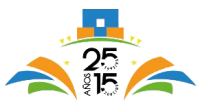Portable device for automated diagnosis of refractive errors

| Funding Agency | |
| Principal Investigator/s |
Daryl Lim, Nicholas J. Durr, E. Lage, E. Addalsteinson (Consortium PI) |
| Information | Type of Grant: Competitive funding , United states/Comunidad de Madrid
Grant code: — Awardee Organization: MIT, New England College of Optometry, CSIC Public Health Relevance Statement: — Project Start Date: January 2012 Project End Date: June 2014 Total Funding: 300,000 € MEDIC Personnel included in the grant / Role: Dr. Eduardo Lage / Investigator / Technical Responsible Abstract Text: There is a need for reducing the prevalence of visual impairment due to uncorrected refractive errors by increasing accessibility to accurate eye tests. Uncorrected refractive errors (URE), myopia, hyperopia, astigmatism, are the largest cause of visual impairment globally. It has been estimated that a total of 153 million people suffer from visual impairment due to URE even though significant productivity and quality of life improvements can be gained by treating URE. The tragedy of the situation lies in the high prevalence of visual impairment due to URE despite the fact that treatment for refractive errors, particularly prescription spectacles, is simple and extremely cost-effective. In both developed and developing countries, cost and accessibility of obtaining spectacle prescriptions have been identified as significant barriers to correcting refractive errors. The global shortage of trained refractionists poses major challenges to obtaining accurate spectacle prescriptions because current approaches to measuring refractive correction face a tradeoff between cost and training requirements . We propose the development of a portable, low-cost device that provides an automatic prescription for refractive correction that is comparable in accuracy and repeatability to state-of-the-art autorefraction. Autorefraction has been shown to provide accurate and precise prescriptions with minimal training requirements. We believe that a device based on wavefront refraction can provide prescriptions clinically equivalent or superior to autorefraction at reduced cost and with increased reliability. By ensuring that only minimal training requirements are needed to provide accurate prescriptions with the device, we expect to reduce accessibility barriers to obtaining refractive correction. Development of the device will begin with the construction of a bench top system that reproduces the capability of state-of-the-art wavefront refractors using scientific-grade equipment. By substituting scientific-grade equipment with consumer-grade counterparts, we aim to reduce cost, while maintaining clinically equivalent performance (<0.125 diopters difference) through innovative hardware and software engineering. The team assembled for the project possesses the necessary expertise and motivation to construct a robust, portable, low cost (<USD$200) wavefront refractor for achieving our goal of reducing global prevalence of uncorrected refractive errors. |
| LINK | Link |



